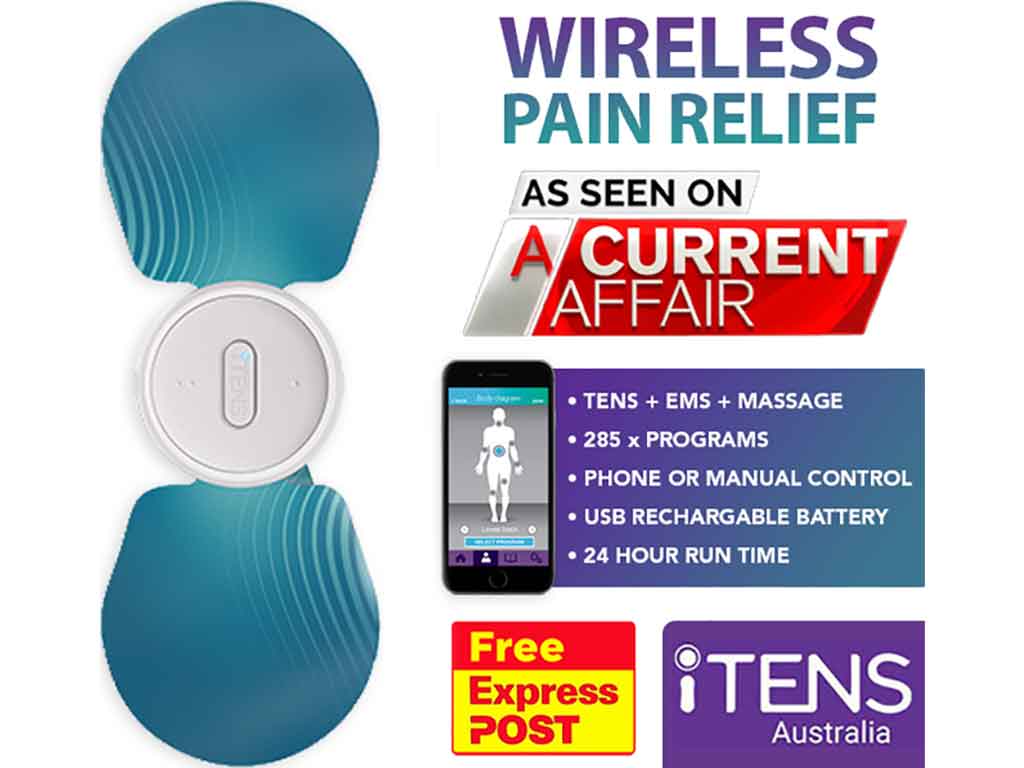
A Transcutaneous Electrical Nerve Stimulation or TENS unit for muscle spasms is a small, portable device that helps relieve pain. It works by sending low-voltage electrical pulses to the affected muscles. It helps block pain signals and triggers the release of endorphins. Using the TENS unit is simple. Firstly, make sure to clean the treatment area. Secondly, place the electrodes either directly on or near the pain area. Lastly, adjust the TENS settings.
A muscle spasm is a sudden, involuntary contraction of a muscle, often causing pain and temporary restriction of movement. Doctors may prescribe pain medications to ease spasms. However, these drugs can cause side effects and may not always be effective. Fortunately, people can use TENS units as an alternative or complementary treatment for muscle spasms. This article will present what a TENS device for muscle spasms is, including how it works and correct usage.
What is a TENS Unit for Muscle Spasms?
A TENS unit for muscle spasms is a battery-operated device that uses low-voltage electrical pulses. It can relieve muscle pain. Additionally, it can treat a range of acute and chronic pain conditions. This includes neck pain, knee pain, joint pain, and nerve pain. A TENS unit comes with electrode pads that people attach to the skin. They are available in different shapes and sizes to suit various body parts.
TENS machines are small and portable. The traditional models are handheld, which individuals commonly see in hospitals or pain clinics. They need to attach the wires to the device. For convenience and ease of use, people have the option to choose wireless units. These models have Bluetooth connectivity. This allows users to access a mobile application and control TENS from there.
When using TENS, it is essential to adhere to the instructions provided by the manufacturer. Moreover, consulting with a healthcare professional if there are any underlying health conditions is crucial. This includes people with cardiac pacemakers or other medical implants. With proper use and guidance, TENS can be a helpful tool for managing spasms.
Causes and Symptoms of Muscle Spasms
Causes:
- Dehydration or electrolyte imbalances: lack of fluids or imbalances in electrolytes such as potassium, calcium, and magnesium can trigger spasms.
- Muscle overuse and fatigue: excessive use or strain on a muscle, often during exercise, can lead to spasms.
- Poor blood circulation: inadequate blood flow to a muscle can cause cramping and spasming due to insufficient supply of oxygen and nutrients.
Symptoms:
- Sudden muscle tightness: a sharp, intense tightening of the muscle group involved. It can temporarily restrict movement.
- Pain: often a sharp or severe pain accompanies the muscle tightness.
- Visible muscle twitching: the affected muscle may visibly twitch or move involuntarily.

How a TENS Unit for Muscle Spasms Works
A TENS unit for muscle spasms works by sending electrical impulses through electrode patches that people place on the skin. The pulse rate or frequency of the stimulation is adjustable to suit different needs or preferences. Low-frequency TENS (10 Hz and below) cause the nerves to become less sensitive. It is also the ideal setting to trigger the release of endorphins. Furthermore, low vibrations give massaging effects.
Meanwhile, high-frequency TENS (50-120 Hz) stimulate the sensory nerves to block pain. This has short pulses and intensity, often characterised by strong but comfortable sensations. It is a suitable setting for people with acute pain. It also has an analgesic effect on activity-induced musculoskeletal pain and fatigue and increases mobility.
The use of a TENS machine also has a positive impact on the circulatory system. The electrical pulses or mild vibrations boost blood circulation in the affected area. This helps to reduce inflammation, relax the muscles, and promote faster recovery of damaged tissues and nerve regeneration.
Theories Present at Work
TENS therapy operates based on two main theories. The first is the Gate Control Theory of Pain. It proposes that TENS overrides the nerves in the spinal cord that act as ‘pain gate’ controllers. The electrical stimulation from TENS is thought to close these ‘neural gates,’ thereby blocking the transmission of pain signals to the brain.
The second mechanism involves the stimulation of endorphin production. The body produces more endorphins, which are hormones that help reduce pain. Endorphins bind to opioid receptors and inhibit them from sending pain messages. They are also known as natural painkillers as they have similar effects to morphine.

How to Use a TENS Unit for Muscle Spasms
Operating a TENS unit for muscle spasms is easy but requires careful administration. Firstly, it is essential to identify the proper electrode placement for effective relief. Users should attach two sets of electrodes on the side or along the painful nerves. The pads should be at least one inch apart and should never overlap.
Once the electrodes are in place, turn on the TENS unit and adjust the pulse rate and pulse duration. Begin at the lowest intensity and slowly increase the level over time. Some machines have pre-set programs to target specific pain types or body aches. Individuals may choose a treatment option based on their condition.
The recommended treatment duration can vary from 30 to 45 minutes. After completing the session, it is important to turn off the unit before removing the pads. Additionally, users may use the TENS machine up to four times daily for chronic muscle spasms. However, give at least a 20-minute break between sessions to allow the skin, muscles, and nerves to rest.
Electrode Placement Guide
People may refer to pad placement charts or guides to ensure proper electrode placement. As a rule of thumb, users must place electrode patches on the muscle areas near or on the origin of the pain. It is important to clean and dry the skin before applying the electrodes to prevent skin irritation and ensure proper adherence.
There are general places to avoid placing the electrodes on the body. This includes sensitive areas like the face or head, throat, and chest. This is because the electrical signals can affect vital organs like the heart or disrupt brain activity.
Conclusion
A TENS unit for muscle spasms is a portable device that alleviates pain by sending mild electrical pulses through electrodes. Low-frequency settings reduce nerve sensitivity, induce endorphin release, and offer a massaging effect. Meanwhile, high-frequency settings block pain signals, providing relief for acute pain. Additionally, TENS units enhance circulation, reducing inflammation, relaxing muscles, and promoting faster recovery. Hence, TENS units offer a versatile and non-invasive solution for managing muscle spasms and various pain conditions.
Operating a TENS device for muscle spasms involves placing electrodes on or near the painful muscles. Users should follow an electrode placement guide, avoiding sensitive areas like the face and chest. Start at a low intensity, gradually increasing while keeping sessions to 30-45 minutes. Moreover, always turn off the unit before removing the pads. For those interested in a wireless TENS unit, iTENS is a recommended option to explore.







